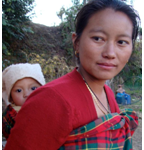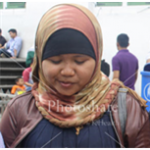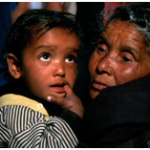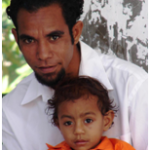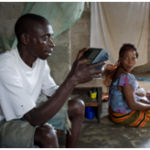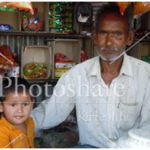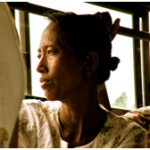Audiences for improving optimal breastfeeding practices include expectant and new mothers, fathers, grandmothers and other caregivers, faith leaders and communities, other community leaders and the broader community, political leaders and others. (Note: The information on audiences here is developed from studies from many countries. You will need to consult or conduct local research on breastfeeding beliefs and practices and health provider knowledge, attitudes, and practices about optimal and local infant/child feeding practices in your location. Use this local research to define the primary and influencing audiences and to inform the audience profiles and strategic design. The people who most influence infant feeding may vary by and within countries and perhaps within communities.)
| Primary and Secondary (Influencing) Audience Segments (with rationale for their selection) |
| PRIMARY AUDIENCESPrimary audience 1: Pregnant women and mothers of infants 0–24 months old – Pregnant women and new mothers are the primary caretakers of infants. Unless a wet nurse or milk bank is used, mothers are also the only ones who can produce breast milk for their children. Women knowing and using optimal breastfeeding practices can improve their child’s survival chances, health, and development. (Note: If needed, you can divide these women into even more targeted groups according to education, age, ethnic group, and other factors, depending on what communication channels best reach them and what characteristics matter in terms of breastfeeding behaviors.)
Primary audience 2: Grandmothers (of the child) and family members who provide newborn care – Often relatives support mothers in caring for infants. Grandmothers and other relatives may help with feeding when the mother is away or busy. Therefore, it is important to reach this audience with information about breastfeeding and the risks of introducing other food and drink too early. Mothers and fathers often also place a high value on the advice and knowledge of family elders when making decisions about feeding a new baby. Grandmothers in particular often have a strong voice in decisions about infant and child feeding. They can also be a strong force in maintaining or changing social norms and cultural practices regarding infant feeding. INFLUENCING AUDIENCES Influencing audience 1: Fathers – While newborn care may be seen as “women’s responsibility,” the father of the child can have a strong influence on breastfeeding practices. If the father is supportive, the mother is more likely to continue breastfeeding and eat more nutritious foods more often while breastfeeding. (In many communities, men are often served the best choices of foods first, leaving little for the women of the household.) If the father expresses disgust or other negative emotions toward the mother because she breastfeeds, she is more likely to discontinue. If the father believes early supplementation is better for the child, the mother is more likely to supplement early. And if the father supports the mother in attending antenatal and postnatal visits, the mother is more likely to attend. As well, fathers can be supportive of reducing a mother’s workload so they have time to practice active breastfeeding. Educating fathers and helping them to be supportive is crucial to increasing optimal breastfeeding practices. Influencing audience 2: Faith communities – Faith communities can be recruited to help make optimal breastfeeding practices the normal things for their members and communities to do. They can show how important breastfeeding is using religious texts and traditions. They can foster safe discussions about barriers to breastfeeding and actions to overcome them within faith-based support groups. They can spread the word about the benefits of maternal nutrition, breastfeeding and the risks of not breastfeeding or of mixed feeding. They can model appropriate behaviors—for example, they can look favorably on mothers who breastfeed on demand. They can support mothers who are having difficulties breastfeeding. They can encourage family members to support mothers—by helping reduce her workload, for example. They can encourage fathers who might have mixed feelings about breastfeeding to be supportive and helpful to breastfeeding mothers. Influencing audience 3: The communities– Community norms play a large role in breastfeeding practices. Helping communities change their expectations and beliefs about breastfeeding can be crucial to sustaining improved breastfeeding practices over time. Influencing audience 4: Policymakers – Policymakers can ensure Baby-Friendly Hospital programs are widely implemented. They can prioritize SBCC programs that increase breastfeeding. They can introduce policies to increase maternity leave to lengthen the time mothers can easily practice exclusive breastfeeding. They can seek or apply funding to temporarily supplement family income to make up for income lost while a mother stays home to breastfeed. They can restrict marketing of infant formula. Faith and other community leaders are often in a position to advocate with political leaders for such changes. |


